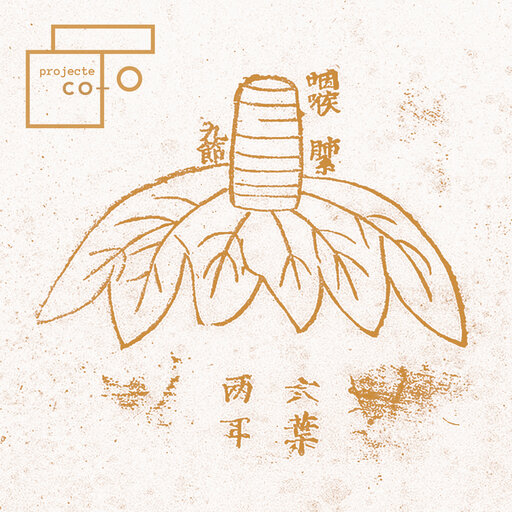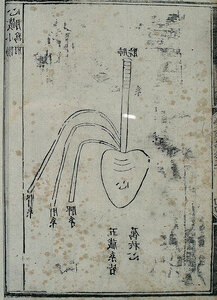
Paso 0: La corporeización del espacio(spa)
If you have any doubt, suggestion or collaboration: corpus@laescocesa.org
Step 0: The embodiment of space
The step 0 of every initiatory ritual for consensus involves understanding space as an extension of its inhabiting bodies (and vice versa, of bodies as extensions of space since it influences the encounters). It is necessary to recover space as a safe and comfortable place. Instead of provoking fear and establishing barriers and limits for the bodies, the space becomes part of them and generates an organic and fluid continuum for habitability and movement. In this step, in which we prepare the space for its embodiment and incarnation, we propose a series of measures or suggestions:
Nose: The always open window
The nose is the window of our body, through which air filled with oxygen enters, exits, and gets filtered as we inhale and exhale. The windows of a space or building are the best pathway to regenerate the air in closed spaces. Therefore, when we carry out an activity in a closed space, it is important to search for natural ventilation and to avoid air circulation systems (air conditioning, heat pumps, etc.), since they disseminate contagions. It is also recommended to minimize the duration of the event in closed spaces and create breaks either outside or in well-ventilated areas.

Lungs: Activities that breath
It is in the lungs where the gas exchange between air and blood occurs. These organs need oxygen. They feed especially from fresh air and open spaces where ventilation and regeneration is greater than in closed spaces. Whenever possible, it is advisable for activities to take place outside. The risk of contamination is much lower.
Arteries and veins: The circulation that avoids saturation
During an event, it is important to estimate whether the number of visitors may surpass the allowed limit, or if concentrations compromising safety distancing may occur. If so, it is necessary to pay attention to the circulatory system of the space, as follows:
- To plan for staggered entries and waiting areas, while transforming this "dead time" in a positive, ludic, and/or creative element (e.g. organizing a raffle to establish the entrance order; turning the waiting into an experience that is part of the event narrative; to use this time to introduce elements of care for the visitors, such as sharing moods or performing some rituals of encountering and stretching to the social body).
- To arrange the works or actions separately as means to distribute the public and avoid visits coinciding in time.
- To search for elements that guarantee one-way circulation of the public.
- To signal spaces, avoiding aggressive codes and choose soft colors, ground signs, illustrations, salutations, positive messages that express care for the bodies, etc. Colored tape and chalk can be used to draw and write. They refer to playful and other ludic modes of interaction, unlike other more standard signals. Furthermore, semiotic design can establish connections with human body parts, as suggested in this text.
 Stomach: Strengthening defenses
Stomach: Strengthening defenses
In the stomach we mix and store ingested food. Likewise, the dining room, the kitchen, or the food court are places that digest encounters and generate community. These are places where food is processed but also conversations. Therefore, in events where food is present, it is recommended:
- To offer food/drinks that strengthen the immune system and provide energy (kombucha, kefir, dark chocolate, etc).
- To arrange food and beverages in a manner that avoids its contamination and minimizes the use of materials. Individual consumption should be promoted. Whenever sharing can't be avoided, it is important to insist on disinfecting hands before and after eating (individualized food like small sandwiches, cookies, fruits protected by their natural skin, like bananas and tangerines, etc.).
- If using kitchen utensils is necessary, please consider the following preference order: 1) reusable and washable material; 2) organic disposable; 3) composting disposable; 4) recyclable disposable.

Heart: Care in reception spaces
The heart is the main organ of the circulatory system, which pumps blood through veins and arteries and distributes it to the entire body. It is also related to emotions and affective feelings. It is important to the care of the bodies that we use affect in language, in the arrangement of spaces and its composing elements. Spaces for public reception must provide the following aspects:
- Seating arrangements must consider the distance between them, respecting the minimal safety distance (2m) but still allowing for visual contact of the entire group (for example, in a circle, around a table etc.). Absences and empty spaces must also be avoided, for example, by removing the 'annulled' seats, occupying them with dummies, placing elements between the seats to mark distances without creating voids...
- Furniture and spaces distribution must consider circulation and energetic balance. Here, techniques like Feng shui seek harmony and balance among bodies and surroundings, and they see objects and spaces as elements that influence and are influenced by our bodies. The relation, communication, and comfort of bodies, among each other and with the inhabited space must be facilitated.
- Protection and cleaning elements must be placed in an accessible and visible way, so that anybody can use them at any time. This can help people to feel they are in a safe and comfortable place.
Skin: Cleaning as care and not as a weapon
The skin is the organ that is in contact both with the interior of our bodies and with the exterior. The skin protects the body but is also sensitive, permeable, and receptive to external stimuli. The sensitivity of the skin requires cleaning rituals for its care. To formulate these cleaning rituals, we offer the following guidelines:
- To create installations and cleaning rituals at the entrance that generate an experience (for example, doormats with natural disinfectant, hand soaps with aromatic lotions, performative experiences in the corridors and access spaces to toilets etc.).
- To include in the event narrative actions of collective, performative, and/or ritualized cleaning.
- To consider the effects of the products on sensitive skin and other living beings and ecosystems, trying to opt for products that respect the environment.
- To offer homemade cleaning products, since they transmit attention and care to visitors (for example, natural alcohol gel).

Paso 0: La corporeización del espacio(spa)
If you have any doubt, suggestion or collaboration: corpus@laescocesa.org